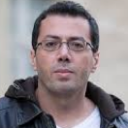Story by TOI World Desk •

61% of Asian Americans feel hate towards them rising: Study
The Asian American Foundation published a report revealing a significant discrepancy between the general public's perception of hate towards Asian Americans and the reality experienced by the community itself.
The STAATUS Index 2024 is a comprehensive study that examines the evolving perceptions of Asian Americans, Native Hawaiians, and Pacific Islanders (AANHPIs) in the United States. The survey, which included 6,272 participants from across the country, aims to identify the most pressing issues faced by the AANHPI community.
“Since its debut in 2021, the STAATUS Index has uncovered hidden perceptions and stereotypes that have given rise to racism against AANHPIs throughout our long history in the US and during the Covid-19 pandemic. Unless we understand and continue to struggle against these deeply rooted views, they
will persist and threaten the wellbeing of AANHPIs when the next crisis emerges,” said Dr Paul Watanabe, AAC Chair
Despite only one-third of Americans believing that hate towards Asian Americans has increased, the AANHPI community reports alarming instances of discrimination and violence. Over the past 12 months, 32% of Asian Americans have been called a slur, and 29% have experienced verbal harassment or abuse. These numbers are even higher for certain subgroups, such as Southeast Asian Americans, who report higher incidences of being called a racial slur (40%), verbal harassment or abuse (39%), and threats of physical assault (22%). Furthermore, a significant portion of Asian Americans fear becoming victims of physical attacks (41%) or discrimination (59%) in the near future due to their race, ethnicity, or religion.
The study also highlights the impact of discrimination, violence, and lack of representation on the AANHPI community's sense of belonging and acceptance. Only 38% of Asian Americans completely agree that they belong, and an even smaller percentage (18%) feel fully accepted for their racial identity in the US Social media (34%), workplaces, neighborhoods, and educational institutions (31%) are identified as the least welcoming environments for those who do not feel fully accepted or do not fully belong.
To address these issues, the study emphasizes the need to break the "STAATUS quo" and advocate for and celebrate AANHPI stories beyond Heritage Month. The study also revealed a trend of rising doubts about Asian Americans' loyalty to the US, with 79% of respondents being unsure or in agreement that Asian Americans are more loyal to their countries of origin than to the United States.
The lack of awareness and representation of the AANHPI community is evident in the findings, with a majority of Americans (55%) unable to name a single event or policy related to Asian Americans, and more than half (52%) unable to name a famous Asian American. When asked about their favorite movies featuring Asian American characters, half of the respondents (50%) could not name any, despite expressing a desire to see more Asian Americans in dramas (59%) and comedies (60%).
To decrease racism, the top three ideas proposed by the study include teaching the history of Asian Americans in K-12 schools and colleges (41%), increasing the visibility of Asian Americans in American society (41%), and providing more opportunities for interaction with Asian Americans (39%). By implementing these measures and raising awareness about the challenges faced by the AANHPI community, the study aims to foster a more inclusive and equitable society for all.
Axios also corroborated some of the above findings stating that their survey reveals a stark contrast in perceptions regarding hate crimes against Asian Americans. The majority of the general American population believes that such incidents are decreasing. However, the Asian American community holds a different view. The survey found that "1 in 3 reported being the subject of hate this past year."
Meanwhile, another recent study conducted by TAAF in March revealed alarming findings regarding the safety of Asian American adults in New York City. The survey, which included a representative sample of 1,000 Asian American adults aged 16 and above, found that "1 in 5 Asian American adults in New York City reported being physically assaulted in the past 12 months."
For more news like this visit TOI.




